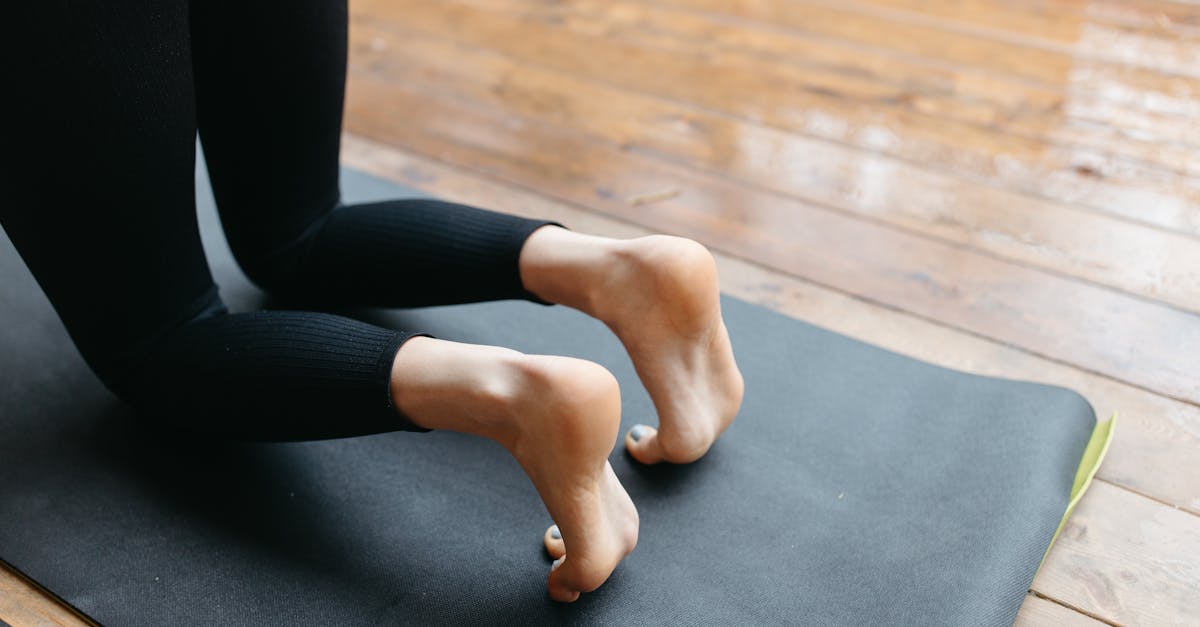|
In Short, Shockwave Therapy is a non-invasive treatment designed to strengthen the core in individuals suffering from hyperlordosis. This innovative method promotes muscle recovery and enhances tissue resilience, making it particularly beneficial for those experiencing lower back pain. By utilizing acoustic waves, Shockwave Therapy stimulates blood circulation and enhances the body’s natural healing process. Clients can expect improved postural alignment and a reduction in discomfort, all within a safe and effective framework. |
Harnessing Shockwave Therapy to strengthen the core in Hyperlordosis involves a multifaceted approach to address the excessive inward curvature of the lower spine. This condition can lead to pain and discomfort, making core muscle strength vital for maintaining proper spinal alignment. Utilizing shockwave therapy, practitioners can enhance tissue healing and invigorate muscle function, promoting better recovery outcomes. Incorporating targeted core strengthening exercises alongside this innovative treatment creates a holistic strategy to alleviate symptoms associated with hyperlordosis, paving the way for improved posture and mobility.

Discover Pulse Align’s Gentle Approach to Wellness
At Pulse Align, we pride ourselves on providing an innovative, non-invasive method that helps the body naturally restore its balance and posture through gentle, imperceptible pulses. This holistic approach promotes greater muscle tone symmetry, which often leads to a decrease in tension and discomfort in the body. By focusing on the body’s ability to realign itself, our services create a nurturing space for clients to explore enhanced well-being.
Recalibrating Your Body Naturally
Pulse Align emphasizes the idea that discomfort and imbalances often stem from misalignments in the body. Rather than directly addressing specific symptoms, our approach encourages the body to recalibrate itself, resulting in improved comfort and posture. Many of our clients report feeling more aligned and balanced after experiencing our gentle stimulation techniques, which facilitate a natural adjustment process.
A Personalized Experience for Every Client
What sets Pulse Align apart is our commitment to providing personalized wellness experiences. Clients have shared transformative testimonials about how our methods have alleviated tension in their necks and backs, enhanced postural balance, and fostered an overall sense of vitality. Our focus on muscle tone symmetry plays a key role in helping individuals feel their best and restore functional harmony in their daily lives.
Your Invitation to Explore Pulse Align
We invite you to visit the Pulse Align website to learn more about our services and find a convenient location to book a consultation for yourself or your family. With clinics available in La Prairie, Mont-Royal, Terrebonne, and more, Pulse Align is dedicated to supporting wellness for everyone. Remember, while our approach complements existing healthcare services, it does not replace them. Let us help you discover how our safe, non-invasive methods can enhance well-being and promote a natural return to balance.
Take the first step towards a more harmonious life today and explore our offerings at Pulse Align.
Medical Disclaimer
The information and guidance provided on this site do not replace the advice of a healthcare professional. While Pulse Align offers supportive services for well-being, clients should consult their healthcare teams for any health-related questions. The improvements reported by clients are attributed to their body’s natural ability to restore balance, not to specific interventions by Pulse Align.
- Targeted Application: Utilize shockwave therapy to focus on the lumbar region for enhanced recovery.
- Muscle Activation: Stimulate deep core muscles to improve stability and support.
- Pain Reduction: Alleviate discomfort associated with hyperlordosis through localized therapy.
- Complementary Exercises: Combine shockwave therapy with targeted core strengthening routines.
- Improved Muscle Tolerance: Enhance the body’s capacity to endure strengthening exercises.
- Holistic Approach: Foster a comprehensive recovery strategy by integrating shockwave therapy.
- Professional Monitoring: Ensure ongoing assessment by specialists to tailor the treatment process.

Hyperlordosis, characterized by an excessive inward curve of the lumbar spine, can lead to various physical discomforts, including lower back pain and hip dysfunction. An effective strategy for managing this condition involves strengthening the core and utilizing innovative approaches such as shockwave therapy. This article delves into how these techniques can enhance muscular strength and promote proper spinal alignment, ultimately leading to improved health outcomes.
Understanding Hyperlordosis
Hyperlordosis is often attributable to muscle imbalances, specifically weak abdominal muscles and tight hip flexors. This condition not only compromises one’s posture but also can increase discomfort and the risk of injury. Recognizing the importance of core strength is essential to managing hyperlordosis effectively.
The Role of Core Strengthening
A strong core serves as a foundation for stabilizing the spine and pelvis. When the core muscles, particularly the abdominals and gluteals, are weak, the excessive curvature of the spine becomes more pronounced. Thus, focusing on core strengthening is critical in the rehabilitation of hyperlordosis. Exercises that target these areas can provide significant benefits, including reduced pain and improved functionality.
Introducing Shockwave Therapy
Shockwave therapy is a non-invasive treatment that employs acoustic waves to stimulate the body’s healing processes. This therapy enhances tissue regeneration and improves blood circulation, making it a valuable complement to traditional strengthening exercises. When integrated into a rehabilitation program for hyperlordosis, shockwave therapy can elevate muscle function and promote better recovery outcomes.
Combining Shockwave Therapy with Targeted Exercises
To optimize the benefits of shockwave therapy, individuals should incorporate specific core-strengthening exercises into their routine. Fundamental movements such as abdominal crunches and glute bridges target the key muscle groups involved in stabilizing the spine. These exercises effectively improve muscle engagement and posture. When participants combine these movements with shockwave therapy, they are more likely to see a reduction in lower back pain and an enhancement in overall muscular balance.
Implementing a Holistic Approach
Adopting a holistic approach to managing hyperlordosis goes beyond mere exercise. It encourages individuals to become aware of their body’s alignment throughout daily activities. Practicing good ergonomics, engaging in stretching routines, and maintaining proper posture all contribute to long-lasting improvements. Shockwave therapy works best within a comprehensive wellness plan that respects the body’s innate ability to recalibrate and restore.
Monitoring Progress and Professional Guidance
Achieving optimal results involves regularly monitoring progress and collaborating with healthcare professionals. Keeping track of improvements not only offers motivation but also helps in adjusting the rehabilitation plan as necessary. Professional guidance can ensure that clients are executing the exercises correctly and may introduce advanced techniques to further enhance outcomes.
Individuals dealing with hyperlordosis can benefit immensely from harnessing shockwave therapy along with core-strengthening exercises. By focusing on muscle symmetry and neuromuscular health, clients can reclaim their physical autonomy while alleviating discomfort. Embracing these principles promotes resilience against hyperlordosis and supports an overall holistic wellness journey. Through the practices offered at Pulse Align, individuals are inspired to nurture their health, achieve balance, and foster a stable and aligned body for better living.
| Comparison Aspect | Description |
|---|---|
| Method | Utilizes shockwave therapy to stimulate muscle engagement and recovery. |
| Focus Area | Enhances core muscle strength to support body alignment. |
| Technology | Employs non-invasive techniques promoting natural healing processes. |
| Muscle Activation | Encourages activation of abdominal and glute muscles for improved stability. |
| Overall Wellness | Aims at improving functional balance and physical resilience. |
| Recalibration | Facilitates natural body recalibration, enhancing posture awareness. |
| Exercise Integration | Can be combined with specific core strengthening exercises for optimal results. |
| Benefits | Pursues enhanced physical functionality and comfort in daily activities. |
| Holistic Approach | Emphasizes a comprehensive method towards achieving overall well-being. |
| Client Experience | Prioritizes a personalized journey towards improved body harmony. |

Client Testimonials: Harnessing Shockwave Therapy for Core Strengthening in Hyperlordosis
In the heart of Mont-Royal, many clients have expressed profound satisfaction with their experiences at Pulse Align. One client shared, “Since incorporating shockwave therapy into my routine, I can finally feel my body recalibrating. The session helped my core strength significantly, alleviating discomfort related to hyperlordosis. I now feel more balanced and naturally aligned.”
Residents of Terrebonne have also voiced their appreciation for the gentle and holistic approach offered at Pulse Align. Another client stated, “The combination of targeted strengthening and shockwave therapy was transformative. I didn’t expect to see such quick results! My mobility has improved, and my low back pain has diminished remarkably. It feels as though my body has started to work with me instead of against me.”
Clients in Deux-Montagnes frequently highlight how Pulse Align’s unique methodology emphasizes enhancing the body’s inherent ability to restore balance. A satisfied client noted, “I had been struggling with my posture for years, but after just a few sessions, I found that my body began to naturally adjust. The gentle pulses of shockwave therapy felt supportive and nurturing, which has been a breath of fresh air on my wellness journey.”
Those seeking holistic recovery options in Châteauguay have reported significant benefits as well. One local shared, “Pulse Align’s approach felt different right from the start. Each session seemed to guide my body into a better alignment. The awareness I’ve gained about my posture and how my muscles work together is incredible. I truly feel like my body is recalibrating, and the pain relief has been a wonderful bonus.”
In Saint-Jérôme, clients appreciate that Pulse Align does more than just treat symptoms; it advocates for a partnership with healthcare teams. A client expressed, “Having health professionals who understand the importance of holistic care makes all the difference. With Pulse Align’s support, I feel empowered to take charge of my wellness and manage hyperlordosis effectively without invasive approaches.”
For anyone in Chicoutimi or Panama City exploring wellness options, Pulse Align’s tailored approach can truly redefine their recovery journeys. Many clients have noted that feeling improvements naturally, thanks to the supportive sessions, was not only motivating but transformative. Akil from Panama City remarked, “I’ve learned to integrate the exercises and recommendations into my daily life, and the results have been remarkable!”
To explore these life-changing services for yourself, visit Our Clinics and discover how Pulse Align accompanies clients and their families on their holistic wellness journeys. Whether you’re in La Prairie or the surrounding areas, allow Pulse Align to guide you towards improved body function and a balanced lifestyle.
Hyperlordosis is a condition that presents with an exaggerated inward curve of the lumbar spine, leading to various complications, including discomfort and low back pain. Addressing hyperlordosis effectively demands an innovative approach that targets muscular imbalance and promotes core stability. One pioneering expert in this area is Dr. Sylvain Desforges, whose extensive background in osteopathy, naturopathy, and manual medicine positions him at the forefront of healthcare innovation.
Dr. Desforges is the founding president of TAGMED clinics and the ACMA association. His career has been marked by a relentless commitment to enhancing patient outcomes, particularly in the realm of chronic pain management. By specializing in the integration of advanced technologies, he has been able to provide comprehensive care that significantly improves his patients’ health and overall well-being.
In his practice, Dr. Desforges utilizes shockwave therapy as a key treatment modality. This non-invasive technique employs acoustic waves to stimulate healing in musculoskeletal tissues. The application of shockwaves enhances blood circulation, increases tissue regeneration, and reduces inflammation. For individuals experiencing hyperlordosis, shockwave therapy can catalyze a recovery journey by promoting muscle relaxation and improving the tolerance of tissues under stress.
The core muscles, especially the abdominals and gluteal muscles, play a vital role in maintaining spinal alignment. Weakness in these areas can exacerbate the curvature associated with hyperlordosis, further contributing to discomfort and potential injuries. Under Dr. Desforges’ guidance, patients are encouraged to incorporate targeted exercises alongside shockwave therapy to effectively strengthen their core and alleviate the symptoms of hyperlordosis.
Dr. Desforges emphasizes that strengthening routines should include movements that engage the trunk. For instance, abdominal crunches and glute bridges create stability and support for the spine. Once combined with shockwave therapy, these exercises enhance the rehabilitation process, enabling individuals to experience significant reductions in discomfort and improvements in posture.
Moreover, Dr. Desforges advocates for individualized treatment plans tailored to meet each patient’s specific needs. His approach transcends merely addressing symptoms; it aims to empower patients with the knowledge and tools necessary to maintain their health. Through education and proactive strategies, individuals can learn to manage their conditions more effectively and achieve a balanced posture.
At TAGMED clinics, Dr. Desforges and his team prioritize client-centered care by fostering a nurturing environment that encourages open dialogue and collaboration. Patients often report transformative experiences, noting how the combination of shockwave therapy and core strengthening exercises has considerably improved their quality of life. With clinics located in the bustling areas of Montréal, Terrebonne, and Mont-Royal, individuals have access to advanced treatment modalities that support their wellness journeys.
In summary, Dr. Sylvain Desforges embodies an integrative approach to managing hyperlordosis by harnessing the power of shockwave therapy to strengthen the core. His innovative methods and dedication to evidence-based care serve as a beacon of hope for those seeking relief from the challenges posed by this posture condition. Individuals looking to reclaim their health can gain invaluable insights and support from his comprehensive treatment strategies.
Neurovertebral Decompression Technology by TAGMED
Mechanism of Action
The neurovertebral decompression technology proposed by TAGMED operates by applying a controlled and gradual traction force on the spinal column. This advanced technique allows for an increase in the space between the vertebrae, significantly reducing pressure on intervertebral discs and nerve roots. As a result, this method enhances fluid circulation in the targeted area, effectively delivering essential nutrients and promoting the natural healing of tissues. By alleviating pressure, the approach contributes to decreasing inflammation and providing relief from pain, particularly for those suffering from conditions such as herniated discs, disc bulging, or moderate to severe spinal stenosis.
Specific Benefits
This non-invasive method has demonstrated its effectiveness in relieving chronic pain and the symptoms associated with various spinal conditions as discussed in Harnessing Shockwave Therapy to Strengthen the Core in Hyperlordosis. By relieving the pressure exerted on the nerve structures, TAGMED’s neurovertebral decompression optimizes the circulation of fluids around the discs. This process not only facilitates a faster recovery but also significantly enhances the quality of life for patients. Studies suggest that patients often experience lasting improvements in daily functions, leading to enhanced mobility and reduced discomfort.
Comparison with Other Treatments
When comparing TAGMED’s neurovertebral decompression technology with other common therapeutic approaches used to manage conditions outlined in Harnessing Shockwave Therapy to Strengthen the Core in Hyperlordosis, some distinct advantages emerge. Conventional treatments, such as analgesics, corticosteroid injections, or invasive surgeries, often come with risks and potential side effects. In contrast, the absence of invasive procedures associated with TAGMED’s approach results in a lower risk profile for patients and minimizes the dependence on medications that may have adverse effects. Moreover, recovery time is frequently quicker, allowing individuals to return to their daily activities with reduced downtime and discomfort.
Case Studies and Testimonials
Numerous patients have reported significant relief from chronic pain through TAGMED’s neurovertebral decompression technology. For example, individuals suffering from herniated discs have noted lasting pain reduction and a quicker resumption of their daily activities. Patient testimonials highlight the effectiveness of the treatment—many express gratitude for not only alleviating their pain but also empowering them to manage their lifestyle more effectively without relying on pharmacological treatments. These personal accounts emphasize the transformative potential of this innovative approach to enhancing overall wellness and functional capabilities.
Hyperlordosis presents a significant challenge not only due to its associated discomfort but also because of its impact on daily life and physical functionality. By employing a multifaceted approach that intertwines shockwave therapy with targeted core strengthening exercises, individuals are better equipped to address the underlying issues tied to this condition. Shockwave therapy enhances the body’s natural healing processes, promoting recovery in affected tissues while simultaneously reducing inflammation and pain.
Integrating shockwave therapy into a rehabilitation program encourages not just muscle recovery but also provides a foundation for improved overall physical performance. The therapy enhances muscle engagement and prepares the trunk, specifically the abdominal and gluteal muscles, for strengthening exercises such as crunches and bridges. These exercises are crucial in combatting the underlying weaknesses that contribute to the hyperlordotic posture.
Moreover, this combined approach fosters increased neuromuscular awareness, empowering individuals to better understand their body mechanics and the importance of maintaining proper posture. As core strength improves, patients often experience reduced discomfort, better stability, and enhanced mobility. This progress not only aids in the relief of lower back pain but also facilitates improved alignment of the spine, ultimately enhancing quality of life.
In summary, the utilization of shockwave therapy to strengthen the core within the framework of managing hyperlordosis represents a holistic method that prioritizes both pain relief and functional recovery. By addressing the root causes of hyperlordosis and enhancing core strength, individuals can reclaim their physical autonomy, break free from the cycle of discomfort, and embark on a journey toward a more balanced, pain-free existence.

Do you suffer from a chronic condition that responds little or not at all to conservative treatments?
Pulse Align offers a non-invasive and innovative approach to restoring the body’s natural balance and posture through gentle, imperceptible pulses. This unique method promotes the body’s inherent ability to address muscle and joint tension, naturally enhancing comfort and overall wellness. By harnessing advanced technology, Pulse Align aims to help clients enhance their posture and rehabilitate muscle tone in a nurturing environment.
Importantly, Pulse Align’s focus is not on discomfort or addressing specific conditions directly. Instead, it serves to encourage the body to recalibrate itself, leading to remarkable improvements in everyday well-being and posture. Clients often experience a renewed sense of comfort as the body learns to find and adopt its natural alignment, fostering a more balanced and harmonious way of moving through life.
At Pulse Align, we pride ourselves on offering personalized experiences tailored uniquely to each client. Testimonials from individuals highlight notable transformations, with many expressing relief from tension in the neck and back, renewed vitality, and a sense of overall wellness through our gentle approach. Our team’s warm and empathetic support ensures that clients feel empowered throughout their wellness journey, discovering new heights of comfort and health.
We invite you to explore the Pulse Align website to learn more about our services and find convenient locations in cities like La Prairie, Mont-Royal, and Terrebonne. Scheduling a consultation for yourself or your family is easy and straightforward. Remember, while Pulse Align complements your existing healthcare team, it does not replace it. We invite families to embark on this journey toward enhanced wellness together, enjoying a safe, non-invasive, and family-friendly approach.
To learn more about our services and book an appointment, visit our website: Pulse Align. Experience how our innovative methods can support your journey to a more balanced and aligned life.
Frequently Asked Questions
Posture Imbalance, body misalignment
Are regular breaks at work useful?
Absolutely, taking breaks to stand, stretch, and move helps reduce tension and improve long-term posture.
How can I adapt my workstation to improve posture?
Adjust chair height, position the screen at eye level, use a footrest, and ensure forearms are parallel to the floor.
Do relaxation techniques help correct posture?
Yes, techniques like meditation or yoga relax muscles, reduce stress, and encourage better body awareness.
What’s the difference between postural imbalance and scoliosis?
Postural imbalance involves poor load distribution and is often reversible, while scoliosis is a structural deformity of the spine.
Can postural imbalance cause fatigue?
Yes, maintaining poor posture requires more muscular effort, leading to increased fatigue throughout the day.
Can you correct postural imbalance at any age?
Yes, while it’s easier when younger, proper exercises and professional support can help at any stage of life.
Are proprioception exercises useful?
Yes, they help improve body awareness, balance, and coordination, which promote better posture.
Can poor posture cause jaw pain?
Yes, improper head and neck alignment may create tension in the jaw, leading to pain or TMJ issues.
Can postural imbalance cause sleep disturbances?
In some cases, muscle tension and associated pain can disrupt sleep.
Can postural imbalance cause digestive issues?
In some cases, poor posture can compress internal organs and influence digestion, causing discomfort and bloating.
Gabriel Dupuis knows that life’s pains can often be traced back to the way we sit, stand, and move. As a Posture Awareness Advocate at Pulse Align, he’s committed to showing readers how small adjustments in alignment can bring big relief. With a blend of empathy and evidence-based research, Gabriel translates the science of posture into practical steps that help ease discomfort, protect against injury, and restore natural balance. He believes that everyone deserves to feel strong, stable, and pain-free—and through his writing, he offers the guidance and encouragement to help readers reach that goal.
Medical Disclaimer
The information and advice provided on this site do not replace the advice, diagnosis, or treatment of a healthcare professional. Please note that the author of this article is neither a doctor nor a specialist in a medical specialty as defined by the Collège des médecins du Québec. Manual medicine, functional medicine, and sports medicine as described on this site exclude any medical treatment or diagnosis made by a doctor or medical specialist. Always consult your doctor for any medical questions. For more details, please read our complete Legal Notice.




